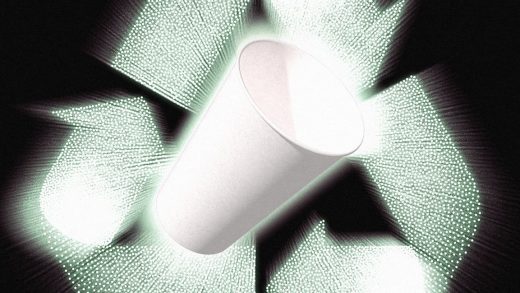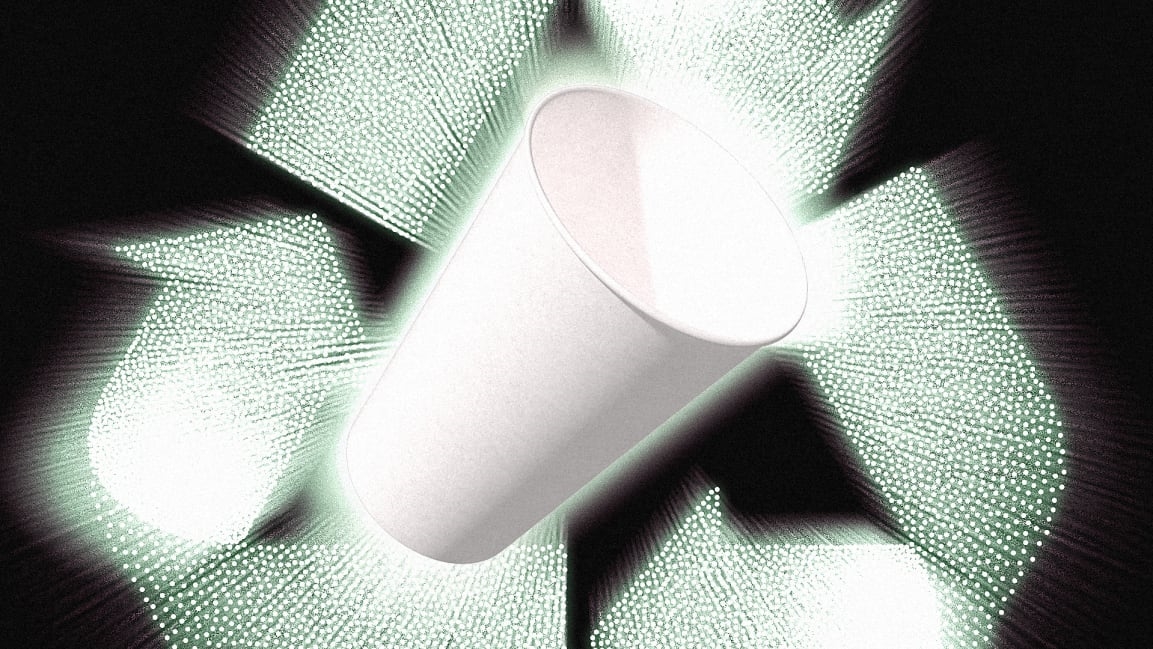Starbucks and McDonald’s are testing these radical cups of the future
McDonald’s and Starbucks. Yum brands. Nestlé. Coca-Cola. Wendy’s.
They’re some of the most powerful food and beverage companies in the world, and they’re all throwing their weight behind a collective effort to tackle a big problem: the 250 billion fiber cups that pile up in landfills each year, most of which will need 1,000 years to biodegrade since they’re actually coated in a micro layer of polyethylene The goal? To create the ultimate disposable paper cup–one that can both be composted and recycled, anywhere in the world.
I covered the project, called the Next Gen Cup Challenge, when it was announced last July. At that point, Closed Loop Partners–an investment firm that focuses on sustainability and is running the competition–was inviting startups around the world to pitch their cup designs and new materials. Now, we’re finally getting a look at some of the best.
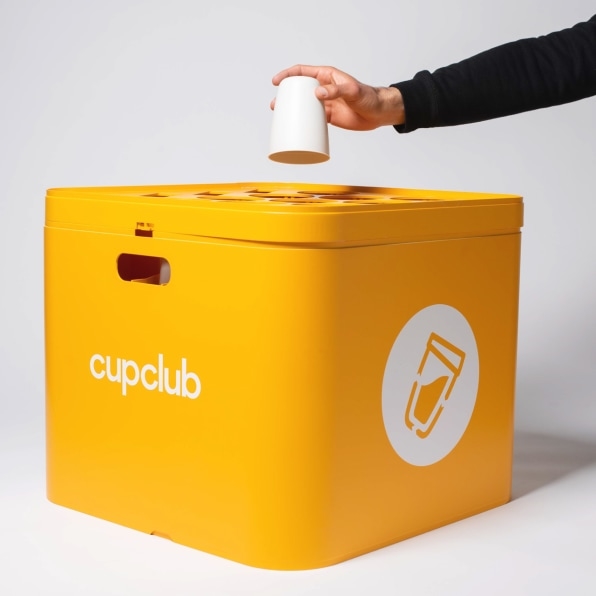
[Photo: courtesy NextGen Cup Challenge]
Since then, Closed Loop, with the assistance of the collaborative design platform OpenIdeo, has collected 500 submissions from 50 countries, and representatives from the food companies involved have picked the most promising 12 ideas to move on.
These winners will share a $1 million grant and enter a virtual accelerator, working with factories and industry partners to both test and mass-produce their cups. Then, they’ll begin real-world beta testing in September. There may be one winner, but it’s quite likely that a few of these finalist companies will combine their technologies to produce one final cup.
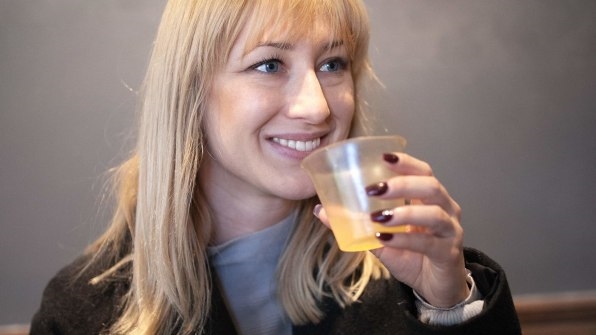
[Photo: courtesy NextGen Cup Challenge]
All of the shortlisted technologies take one of three basic approaches. A few propose replacements to the aforementioned polyethylene liner in paper cups. While polyethylene keeps paper waterproof, insulates a drink to keep it hot or cold, and can prevent sweaty condensation from building outside the cup, it’s also the primary component that keeps most paper cups from being recycled or composted.
A second group of finalists proposes radical new paper composites that need no liner at all, allowing them to biodegrade or be recycled easily. And a third category proposes another direction entirely: reusable cups that can be collected after being used, through either a subscription or scout’s honor system at your local Starbucks. One startup goes so far as to detail a high-tech cup with an RFID lid for managing its inventory inside a complicated venue like a stadium (which is an idea that’s been experimented with before).
“The opportunity for the most immediate solution is the liner,” admits Bridget Croke, vice president of external affairs at Closed Loop Partners. “It doesn’t completely prohibit recycling in some markets, but it’s the biggest barrier to scaling recycling. If we can remove that barrier . . . it’s the quickest solution to get recyclable. And if the cup’s material is compostable, too, it gives flexibility market by market.”
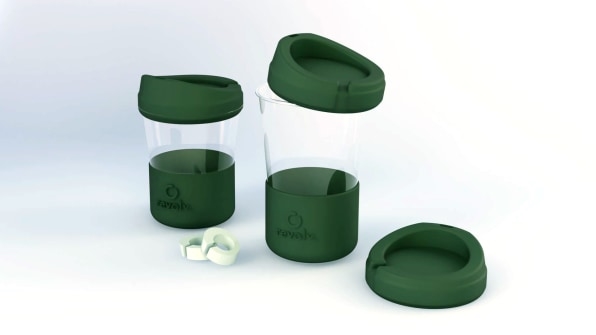
Over the next few months the finalists will find out if their cups can be made by the traditional cup supply chain, by working directly with factories that partner with companies like McDonald’s to produce their current cups. This is crucial; their designs need to be able to scale within the current manufacturing infrastructure rather than requiring completely bespoke production methods. Along the same lines, the cups will also need to fit inside the existing waste management system–ideally, they will need to be something any recycler is happy to take, because recycling is ecologically preferable to composting.
“[Composing] is not a great environmental solution,” says Rebecca Zimmer, global director of environment at Starbucks. “We don’t want everyone throwing their packaging in their backyard. There will always be a greater environmental benefit to recovering the material [and using it to] develop more packaging, because it’s offsetting virgin resources. There’s not as much value in soil.”
And then there’s the most pressing challenge that contestants’ designs will face when they’re beta tested in September in pilots at restaurants, universities, and stadiums: Do they actually work?
“On a basic level, can it hold hot boiling liquids without the seam falling apart–without saturation into the seams and collapse of the cup?” Zimmer asks. “Those are some of the things that would happen if a liner was unable to handle the temperature of the fluids.”
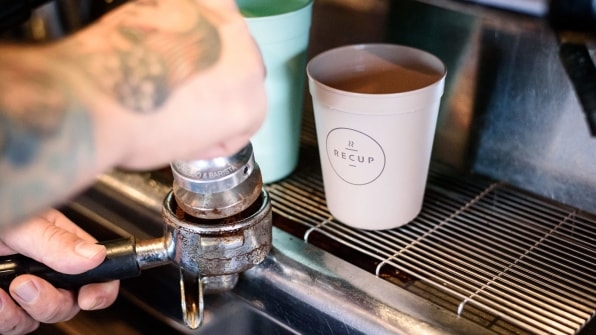
Material validation will happen through a combination of factory partners and formalized, internal testing at companies that are part of the Next Gen Cup Challenge. One major potential problem that companies will be looking for is whether the cups change a product’s flavor.
“At Coca-Cola, we’d take a cup out of the challenge and do sensory testing and make sure it doesn’t change the taste. We do that with every cup or container,” says Bruce Karas, who leads sustainability and environment for Coca-Cola North America. “Think of with coffee, if you stir up coffee and you go to a place with the wooden stirring stick, people will taste it. The sensory perception with a piece of wood in your mouth is different than plastic or metal. It’s typical in the food [for that to happen]. We have scientists, that’s all they do–scientists who do R&D on packaging.”
Coca-Cola isn’t really in the business of selling disposable cups–and will likely take a back seat in Next Gen Cup testing–but McDonald’s does buy cups. Lots of cups. Alongside Starbucks, it distributes 4% of all cups worldwide each year, and the experience of using those cups is key to each brand. It will be putting Next Gen cups through the paces in the coming year.
“There’s a whole host of things we would be looking at from a performance standpoint, and we’d be using our existing standards and cups as a baseline, and understand if any of these innovations meet the current standard we have or beat those standards,” says Marion Gross, the McDonald’s chief supply chain officer for the United States. Gross explains that beyond taste tests, “we’d also be looking for things like, does the cup have proper rigidity? Is it strong enough to withstand a period of time sitting in someone’s drink holder in the summer, in the winter when it’s cold? Does it keep the beverage hot for a reasonable amount of time, or does it keep a beverage cold? How does the ice melt? Does it water down the beverage sooner than customers would expect?”
Gross says it’s too early to know if one cup design will be able to handle both the cold sodas and hot coffees at McDonald’s, or if it will actually require two cups of the future to handle all its products.
It’s also worth noting that even the perfect paper cup won’t fix everything for all of these companies (or the planet). Starbucks admits that it will likely need to find an alternative solution for its iced beverages, which feature rich hues you can only see through transparent plastic. However, it is possible that Next Gen Cup technologies, which range from new materials to new recycling standards, could provide some part of an iced drink solution for Starbucks to implement down the line. Indeed, one finalist is actually a transparent plastic alternative developed from plants that could theoretically be used in straws or cups.
For now, developing the perfect paper cup is a daunting task unto itself. Assuming the Next Gen Cup winners can figure out how to attain proper performance, source the right materials, produce cups at scale, and make it all recyclable, the final big question facing the challenge–and the companies behind it–will simply be, do consumers actually like using the new cup?
“My first reaction is, what does the customer think? And what does the customer want? We’re obsessed with what the customer wants and expects from McDonald’s,” says Gross. “Regardless of what the substrate is, if it’s not appealing to the customer, or they say this is too weird, it’s probably not going to rate very high.”
(49)

